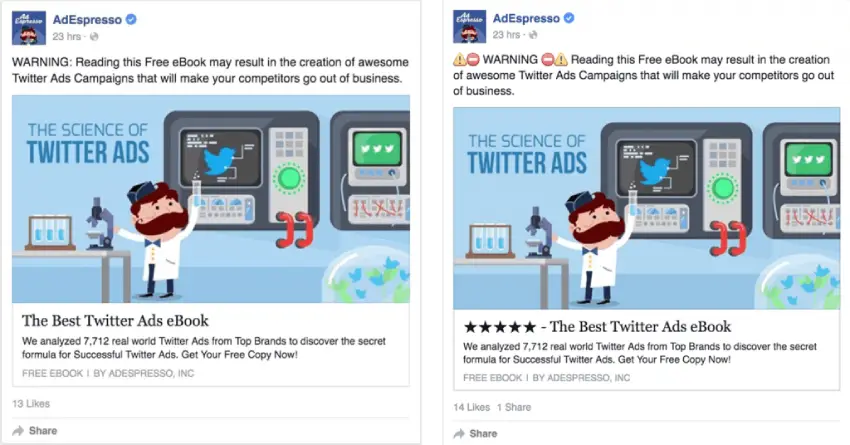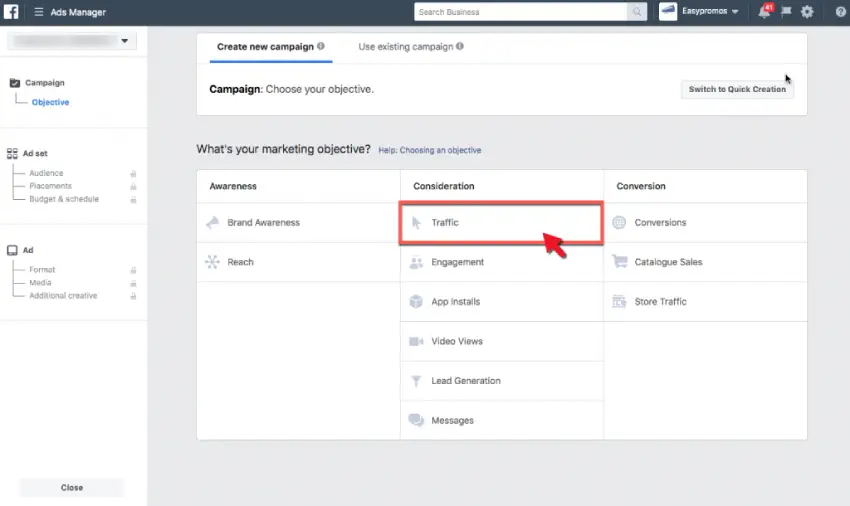However, once you’ve got the hang of creating killer competitions, there will come a time when you need to bring your efforts to the next level. The thing is, when used in isolation, competitions are mainly suited to marketing to your existing audience. That’s because most of the people who see them will naturally be your email subscribers, website visitors, or social followers.
But competitions don’t need to be used in isolation.
In fact, very few digital marketing tools reach their potential when separated off into little silos. The mark of an innovative marketer is spotting which strategies complement each other best.
Competitions and Facebook Ads are one of these killer strategy combinations. It’s common sense, really. Facebook Ads are good for reaching new people. Competitions are good at engaging them. It’s a match made in heaven.
This is borne out in the data, too. When you combine competitions with an advertising budget, you get an astonishing 10x more entrants on average. I don’t need to tell you that that’s the difference between engagement steadily growing – or exploding with overnight success.
What makes a great Facebook ad?
You’ll be happy to hear that I’m going to assume no prior knowledge. The good news is that Facebook ads are actually incredibly simple.
There are three main elements to a Pay Per Click (PPC) campaign: creativity, targeting, and the user experience when someone actually clicks through to your website.

Let’s quickly look at what each of those elements means.
The creative elements shouldn’t need much introduction. This is your ad copy and the visuals that accompany it. For your copy, all the normal best practices apply. Keep it simple, clear and add a sense of urgency. You want visuals that will stop people scrolling through their Facebook feed.
In this regard, the visuals are the most important part of your campaign. If you don’t have a designer to create visuals for your campaign, try some easy-access online graphic design software.
When it comes to ad copy, dense paragraphs are out. Instead, break up the text.
One strategy that works well is incorporating emojis in your copy to highlight key information, as well as your CTA. While emojis don’t work 100% of the time, they can reduce the Cost Per Click (CPC), as this case study from AdEspresso highlights.

We’ll go over targeting in detail a little later.
Next, there’s the user interface when users click the link in your ad. For today’s purposes, that’s your competition, promotion, or giveaway. This is where I’ll hand over to Easypromos for some quick tips:
Why are you running Facebook Ads? To get more traffic for your promotions! Every promotion you create has its own unique link – so make sure you use it as the call to action in every ad. Optimize the promotion landing page so that new arrivals know exactly what you want them to do.

Tip! When you start the Facebook Ads campaign, choose as the marketing objective:

How to test and optimize Facebook Ads
Okay, so now we know what makes an effective ad. Time to talk about putting this into practice.
Use the guidelines we discussed before to create a couple of different ads. Experiment with different combinations of text and visuals. As a rule of thumb, try out at least 2-3 different pieces of copy and 3-4 visual elements.

Facebook will use multi-variant testing to find the best combination of copy and visuals.
Finding the best version of your Facebook Ads will help reduce your cost per click, so you get more bang for your buck. This article has a great range of Facebook ads, with visuals and copy, that you can refer to if you’re stuck.
How to create Facebook video ads
If you’re serious about Facebook advertising, you should be leveraging video content rather than still images. It’s no secret that Facebook’s algorithms privilege videos. No wonder, as they are so effective at engaging users.
Here’s a couple of pointers.
The first thing you’ll want to pay attention to is the length of your video. People scrolling through Facebook aren’t known for their long attention spans, so as a rule of thumb try to aim for 15-30 seconds.
In the ad, you should cover the following points:
- Hook in the first 2 or 3 seconds
- Explain your offering
- End with a clear Call to Action
Keep in mind that the vast majority of Facebook’s traffic comes from mobile devices. Your audience is standing on trains or sitting in waiting rooms. So if you have a voiceover, make sure you provide subtitles.
To get the best results across all devices, go for either 3:4 or 1:1 aspect ratios.

And finally, don’t assume that your videos will autoplay. Many people turn off the autoplay feature – because it irritates them, in order to save data, or to improve page loading times.
To get around this, make sure you set the video’s holding image to something engaging. You need to convince users to click the link or play the video.
Another advantage of video ads over images is that you can gauge audience engagement. For example, a person who watched 90% of your video is likely to be quite engaged in your message. You can use retargeting ads to target these people. You can’t do the same thing with a still graphic.
How to use Facebook audience targeting
Now, onto targeting. This is probably the aspect of Facebook advertising that people find difficult. Really though, it’s not all that hard.
First of all, there are two ways that you can break up your audience to target ads. These are called static factors and dynamic factors.
Static factors are things that don’t really change, or not quickly at least. This includes the likes of age, gender, interests, and location. Dynamic factors are things that change more rapidly. The main one is someone’s location in the customer buying cycle.
A quick note on dynamic factors. Your customer’s position in the buying process can range from total stranger to repeat customer. The former needs messages to educate them, while the latter will respond best to personalized offers.
Eugene Schwartz discusses this in his 5 levels of customer awareness. I created the graphic below to show how this theory, alongside the 5 types of Facebook Ads you should be creating.

With me so far?
The first people you want to target with your Facebook ads are your existing audience. These are the people who visited your website, are your social media followers, or on your email list. These are your warmest leads.
You want to analyze your audience and track who engages with your competition.
Once you’ve targeted your warm leads, you can create a lookalike audience. This is where Facebook uses the demographic information you have about your existing audience to identify people who have similar characteristics.
Here’s a Facebook guide to creating a lookalike audience.
Just like before, it’s important to ensure your targeting is working. After your campaign runs for a little while, chances are you’ll find that certain demographics are more engaged than others. Simply exclude the ones that aren’t returning engagements, and focus your resources on the most effective audience segments.
Retargeting with Facebook Ads
Retargeting is when you target ads at people who have already visited your site – but they haven’t carried out whatever action you want them to. Why is this important for competitions?
Well, attracting someone to your contest page is fantastic and all, but you want to maintain that engagement. Especially if they haven’t participated in the contest yet!
In this context, retargeting is the perfect follow up. You can be direct with your ad copy…

A good way to write engaging retargeted ads is to subtly reference the fact that that’s what you’re doing in the copy. This might look something like “thanks for visiting the website. Enter now for a chance to win…”.
Retargeting ads are a cost-effective way of increasing the number of contestants in your competition.
How to use dark posts to reduce the cost per click
Here’s one extra tip.
Facebook has a feature called Dark Posts. This isn’t something from Harry Potter, though it sounds like it could be.
Implementing these changes is a bit fiddly, but the idea behind it is simple. Every ad you create has a unique ID. If you want to keep the reactions associated with an ad, you can choose to reuse the same ID over and over again. What this does is consolidate all of your engagements from your previous ads.
Implementing this trick on your ad will help reduce your CPC. It’s a pretty simple trick that will get you better results for less money.
Wrapping up
So there we have it. This guide will allow you to create your first Facebook ad campaign, and more importantly, make sure it actually works.
As I said at the outset, combining competitions with Facebook advertising is a winning formula for customer acquisition.
Even better, this strategy is inherently scalable. As your audience grows, and with it your sales, you’ll quickly be able to dedicate more and more resources to your advertising efforts. Because of this, this customer acquisition method is an ideal part of your growth strategy.